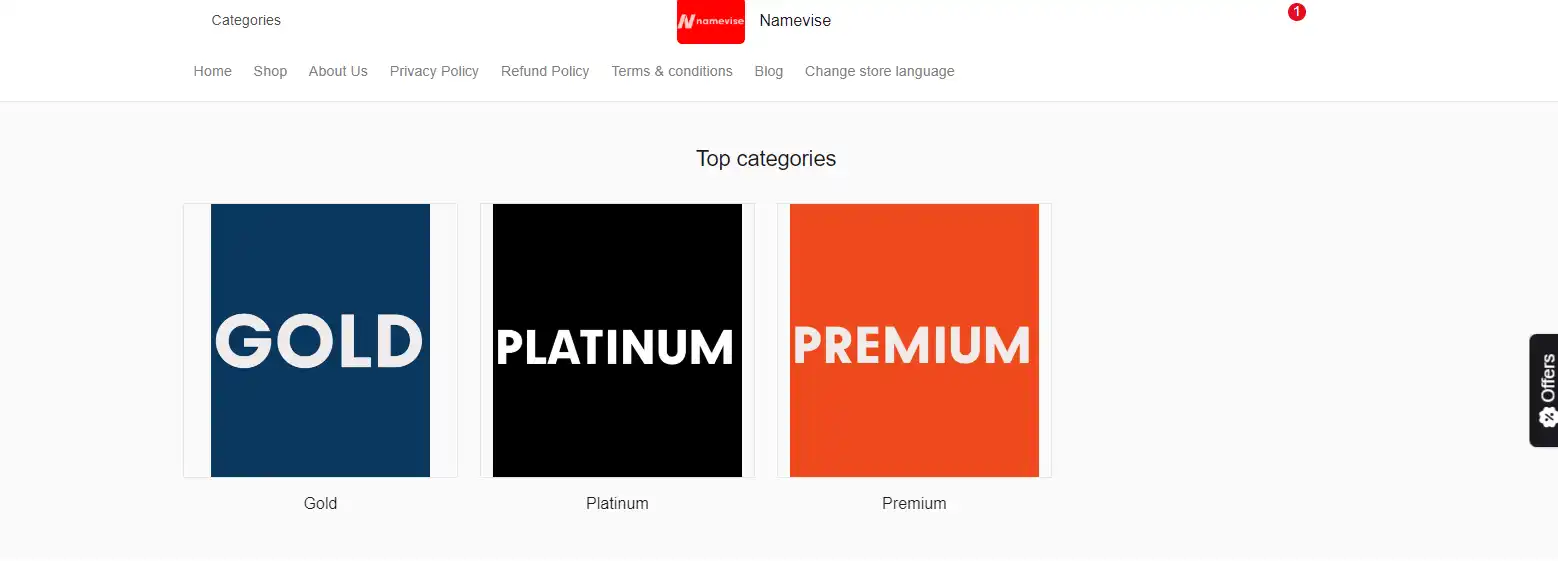
Are you ready to create a website for your small business in 2023? This blog post will provide you with the essential steps to get started. We'll cover topics such as website design, domain registration, hosting, content management, and more. With our step-by-step guide, you'll be able to create a professional website for your small business in no time.
So, if you're ready to take your business online, let's get started! First, you'll need to register your domain name. This is the address people will use to access your website, so it's important to choose something that is easy to remember. Once you've registered your domain name, you'll need to find a hosting provider to store your website's files. Look for a provider that offers reliable uptime and customer support.
Next, you'll need to choose a website design. You can either create your own design or use a website builder to create a professional-looking website. If you decide to use a website builder, you'll be able to choose from a variety of templates and customize them with your own content. Once you have your design ready, you'll need to upload it to your hosting provider.
Finally, you'll need to manage your website's content. This includes adding new pages, updating existing pages, and creating a blog. You can use a content management system (CMS) to make this process easier. Popular CMSs such as WordPress and Drupal are easy to use and will help you create a website that looks professional.
How To Make A Small Business Website In 2023
As a small business owner, having a website is crucial to your success. In 2023, having an online presence is more important than ever. A website can help you reach new customers, establish credibility, and promote your products or services. In this blog post, we'll provide you with the essential steps to create a professional website for your small business in 2023.
Creating a professional website for your small business in 2023 is a great way to get ahead of the competition. Not only will it help you reach new customers, but it will also help you build trust and credibility with potential customers. Additionally, having a website can help you easily showcase your products or services, allowing customers to make informed decisions about what they want to purchase. With the right tools and guidance, you can create a website that will help your small business succeed in 2023.
Determine Your Website Goals
Before you start building your website, it's important to identify your goals. Who is your target audience? What is the purpose of your website? What are your goals or objectives? Setting measurable goals will help you stay focused and track your progress. Once you have identified your goals, you can begin to plan the design and content of your website. Think about the look and feel you want to create and how best to present your content. It's also important to consider the user experience and how easy it is for visitors to navigate your website. Additionally, consider the technical aspects of your website, such as the hosting and domain name.
Choose Your Website Platform
There are many website builders and content management systems (CMS) available. Consider your technical skills and budget when choosing the best platform for your needs. Some popular options include WordPress, Wix, and Squarespace. It's important to research the pros and cons of each platform to determine which one is right for you. WordPress is a popular choice because it's free and open source, but it can be more complicated to set up and manage. Wix and Squarespace are easier to use, but they come with monthly fees. You may also want to consider other options such as Shopify, Drupal, or Joomla.
When selecting a platform, make sure it has the features you need. Does it offer the ability to customize the look and feel of your website? Does it provide plugins and tools to help you manage your content? Does it offer good customer support?
It's also important to consider the security of the platform. Make sure it has the necessary security measures in place to protect your website from malicious attacks. Finally, check that it is compatible with any other software you may need, such as payment processors or analytics tools.
Register Your Domain Name
Your domain name serves as your internet website address. Choose a memorable and relevant domain name that reflects your brand. Check for availability and purchase your domain from namevise.

Consider purchasing variations and extensions to protect your brand. Once you have your domain name, you will need to set up hosting for your website. This is the service that will keep your website online and accessible to the public. Look for hosting services that offer reliable performance and the features you need. Make sure to read reviews before making your choice.
Next, you'll need to design your website. You can use a website builder to create a basic website quickly, or you can hire a web designer to create a custom website for you. To make the right choice, consider your website's goals and the features required to achieve them.
Finally, you'll need to promote your website. You can do this by creating content, optimizing for search engines, and engaging with your audience on social media. With the right strategy, you can increase traffic to your website and build a successful online presence.
Select Your Web Hosting Provider
Web hosting is the service that allows your website to be accessible on the internet. Compare hosting options and features, and consider your website's traffic and storage needs. Choose a reliable and secure hosting provider that fits your budget. Once you have chosen a web hosting provider, you will need to register a domain name. This is the address that people will enter to access your website. After registering the domain, you will need to configure your hosting account with the domain name. Finally, you will need to upload your website files to the hosting server.
It is important to keep your website up to date with the latest security patches and monitor for any suspicious activity. You should also regularly back up your website files in case of any unexpected issues. Additionally, you should consider setting up a monitoring system to track website performance and any errors that may occur.
Finally, it is important to have a plan for when your website experiences high traffic. Make sure your hosting plan provides enough bandwidth and resources to handle the increased demand. Consider using a content delivery network to help improve website performance and reduce the load on the hosting server.
Design Your Website
Your website's design should reflect your brand and be optimized for user experience. Choose a website template or hire a designer to create a custom design. Create a consistent brand identity with colors, fonts, and imagery. Make sure all of the content is easy to find and navigate. Include a search bar and clear menu options. Make sure the website is responsive and looks great on any device. Add a blog or news section to keep customers informed about your latest updates. Include a contact form so customers can easily reach out with questions or feedback. Finally, ensure the website is secure and protected with an SSL certificate.
Create High-Quality Content

Develop a content strategy that aligns with your website goals. Write compelling copy and headlines that engage your audience. Incorporate multimedia elements such as images and videos to enhance your content. Optimize your content for search engines by including relevant keywords. Analyze your current content and update it regularly to stay up to date. Finally, use analytics to track the performance of your content and adjust your strategy as needed.
Enhance your website for search engines.
Search engine optimization (SEO) is the process of optimizing your website to rank higher in search engine results pages. Conduct keyword research and optimize your website's structure and content. Build high-quality backlinks to improve your website's authority. You can also use social media to help with SEO. Utilizing platforms such as Twitter, Facebook, and LinkedIn can help you reach a wider audience and build relationships with potential customers. Additionally, you can use Google Ads to help your website appear in the top search engine results. Make sure to track your performance and adjust your strategy as needed. Finally, create content that is relevant and engaging to keep visitors on your website.
Test and Launch Your Website
Before launching your website, conduct thorough testing and debugging to ensure it functions properly. Ensure your website is mobile-friendly and optimized for all devices. Launch your website and promote it to your audience through social media and other digital marketing channels. Be sure to track the performance of your website to understand how users are engaging with it. Monitor website traffic and analyze user behavior to identify areas of improvement. Make sure to update your website regularly with fresh content to keep visitors engaged. Additionally, use analytics to measure the effectiveness of your digital marketing campaigns. Finally, consider running A/B tests to optimize your website for the best user experience.
Maintain and Update Your Website
Regularly monitor your website's performance and analytics to identify areas for improvement. Update your content and design to keep your website fresh and engaging. Stay up-to-date with security and software updates to ensure your website is secure. Make sure to optimize your website for mobile devices to ensure the best experience for your visitors. Consider using A/B testing to determine which changes to your website have the most impact. Encourage website visitors to provide feedback to gain valuable insights into how to improve your website. Finally, use social media to promote your website and build an online community.
Conclusion
Creating a small business website in 2023 is essential for success. By following these essential steps, you can create a professional website that reflects your brand and engages your audience. Don't wait any longer, start building your website today! The first step is to choose a domain name for your website. Choose a name that's memorable and pertinent to your business. Next, you'll need to select a hosting provider.
This will give you the space and resources to store your website on the internet. Once you have purchased hosting, you can start designing your website. You can either use a website builder or hire a web developer to create a custom website. Finally, make sure you Improve your website for search engine optimization (SEO). So that customers can easily find you online.


